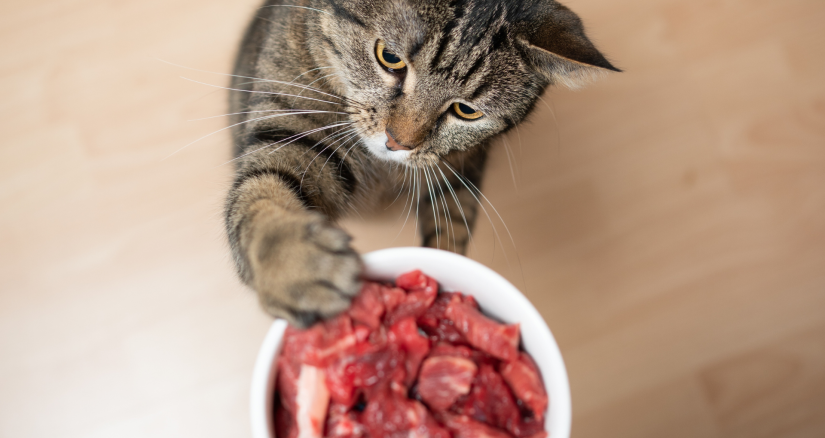
Rallying Behind Research: Industry’s Obligation in Keeping Raw and Freeze-Dried Pet Foods Safe from H5N1
With the increased reporting of Highly Pathogenic Avian Influenza (HPAI) H5N1 outbreaks in poultry as well as dairy cattle, questions have surfaced as links to illness and deaths in cats have been linked to feeding certain pet foods and unpasteurized dairy products contaminated with the virus. In these reported cases, is it is unlikely that the foods consumed underwent any kind of cooking or heating process that would render the virus inactivated. Recently, BSM Partners shared how to help mitigate risks posed by H5N1 to pets and pet parents.
One thing experts definitively know is that pathogenic (disease causing) viruses and bacteria are inactivated when pet food is cooked to an internal temperature of 165 F, making these cooked products safe to consume. Research has shown that pasteurizing dairy products to 165 F will also inactivate H5N1. Pet food that has been made through extrusion cooking (kibble), retort cooking (cans, trays, pouches), and baking (biscuits and some treats) will heat the food enough to be safe and inactivate pathogens such as H5N1 and even bacteria like Salmonella, E. coli and Listeria—all of which can cause serious foodborne illnesses in both pets and people.
The global raw and freeze-dried pet food market was estimated to be $3.1 billion dollars in 2023. Many pet parents prefer to feed raw or freeze-dried pet foods because they believe they are healthier for their pet. Reasons for this may be claims of improved digestibility, greater nutrient availability, and some raw food advocates stating that feeding such an “ancestral” diet must be better for pets because it is what wild canids eat. Whatever one’s opinion is on feeding raw and non-cooked freeze-dried diets, one thing is certain: there is no pathogen-mitigating process in true raw or freeze-dried diets when they are not cooked.
To help address pathogen control in raw or non-cooked freeze-dried pet foods, processes using high-pressure processing (HPP) to help pasteurize pet foods has become more common. Studies have shown that if done sufficiently, HPP can inactivate some pathogenic bacteria to safe levels for the consumption of raw and freeze-dried pet food products. However, some pathogens, such as certain forms of E. coli and Listeria bacteria, may be more resistant to complete inactivation even with routine HPP processes.
It is also an accepted practice that lowering the pH of the food by adding food ingredient acids can help inactivate pathogens including H5N1. A recent study evaluated using both HPP and acidification to see if these processes combined worked even better at reducing pathogens in raw uncooked pet food. This new publication demonstrated that HPP in conjunction with adding acid food ingredients improved pathogen inactivation better than HPP alone. While this study specifically looked at bacterial pathogens such as Salmonella, E. coli and Listeria, it is believed that this combination may also be more effective against viruses such as H5N1.
This new research provides more options for raw and freeze-dried pet food manufacturers who do not use heating or cooking in their processes to help mitigate the risk for pathogens such as H5N1. Specifically, research should be done to measure how well HPP and acidification will work in tandem to inactivate specific viruses like H5N1. Testing raw pet food ingredients for pathogens such as Salmonella and H5N1 are options, but even the best testing protocols have the possibility to fail. Pet parents who choose to feed true raw uncooked diets or freeze-dried diets that do not undergo any cooking process are encouraged to contact the company who makes those pet foods and ask how their products are processed to mitigate pathogens, including H5N1.
As uncooked raw and freeze-dried pet foods continue to grow in the market, it is the responsibility of each company that makes these types of diets to help facilitate, sponsor, and fund research that identifies the best manufacturing processes to help mitigate any disease risk to the pets they serve. With the exponential growth of the raw and freeze-dried parts of the pet food industry also comes the responsibility of companies enjoying that growth to ensure they are selling the safest foods that this category of pet food can offer.
Experts in the pet food industry—such as those at BSM Partners—have the knowledge and capability to perform this type of research, and the raw and freeze-dried segment of the pet food industry should commit to supporting new research to ensure their products are as safe as possible for all pets who consume them.
Follow us on LinkedIn for the latest updates on all things happening here at BSM Partners.
About the Author
Dr. Bradley Quest, DVM, is the Principal Veterinarian at BSM Partners. He has practiced clinical veterinary medicine, developed and tested hundreds of pet food and health products, performs extensive animal health research, and helps navigate pet food ingredient approval for clients.
This content is the property of BSM Partners. Reproduction or retransmission or repurposing of any portion of this content is expressly prohibited without the approval of BSM Partners and is governed by the terms and conditions explained here.